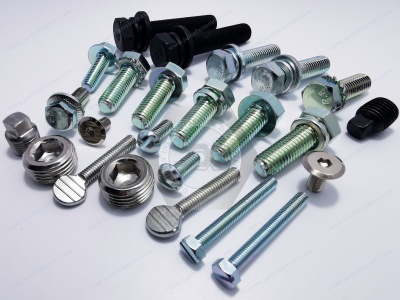Call Us
+86 136 6007 9809
Call Us
+86 136 6007 9809
Nov. 16, 2024
Title: ISO 16047: Understanding Torque/Clamp Force Testing for Fasteners
Introduction: Fasteners play a critical role in the safety and integrity of mechanical assemblies, especially in industries such as automotive, aerospace, and construction. Accurate torque and clamp force measurements are essential for ensuring that fasteners provide reliable performance. ISO 16047, titled "Fasteners - Torque/Clamp Force Testing," is the international standard that outlines test methods for evaluating these parameters in fasteners. This article will explore the importance of ISO 16047, its application in testing fasteners, and how it benefits quality control in various industries.
What is ISO 16047?
ISO 16047 is an international standard that specifies methods for testing the torque and clamp force of fasteners. This standard is widely recognized for ensuring that fasteners meet necessary quality and performance standards under specified conditions. The goal of ISO 16047 is to provide standardized testing procedures that help manufacturers assess the torque-tension relationship, ensuring that fasteners are safe and effective for their intended applications.
Key Components of ISO 16047
The ISO 16047 standard focuses on two main testing parameters:
1. Torque Testing: This involves measuring the amount of rotational force needed to tighten a fastener. Torque testing helps ensure that fasteners can withstand required loads without damaging the materials they are securing.
2. Clamp Force Testing: Clamp force testing measures the axial force exerted by a fastener to hold parts together. It’s critical in applications where joint integrity and durability are essential, as insufficient clamp force can lead to joint failure.
These tests are conducted under controlled conditions to guarantee accurate and reproducible results, providing manufacturers with reliable data on a fastener’s performance.
The Torque-Tension Relationship in Fasteners
ISO 16047 is essential for evaluating the torque-tension relationship, a key factor that determines how well a fastener holds components together. The torque applied to a fastener should generate sufficient tension (or clamp force) to secure the parts without causing over-tightening or under-tightening.
Over-tightening: Leads to excess tension, which can weaken the fastener or the material it’s securing, potentially leading to failure.
Under-tightening: Results in insufficient clamp force, risking joint loosening and failure under load or vibration.
ISO 16047 provides detailed guidelines for accurately measuring and optimizing this relationship, helping ensure that fasteners achieve their intended purpose.
Benefits of ISO 16047 Testing
Implementing ISO 16047 testing offers several benefits:
Enhanced Safety: Ensures that fasteners meet required safety standards, minimizing the risk of joint failure.
Quality Control: Assures manufacturers and clients that fasteners comply with international standards, boosting confidence in product quality.
Improved Performance: Helps in identifying the optimal torque settings for fasteners, which improves their performance and longevity in demanding applications.
Reduced Costs: Minimizes the risk of fastener failure, reducing the need for repairs and replacements in the field.


Industries Benefiting from ISO 16047
Industries relying on strong mechanical joints benefit the most from ISO 16047 testing:
Automotive Industry: Ensures that fasteners can endure vibrations and stresses, critical in vehicles' mechanical systems.
Aerospace Industry: Helps maintain safety in aircraft by verifying the strength of fasteners under extreme conditions.
Construction Industry: Guarantees the integrity of fasteners in structural components, ensuring safe and stable buildings and infrastructure.
Implementing ISO 16047 Testing for Fasteners
For businesses involved in manufacturing or supplying fasteners, adhering to ISO 16047 can improve product quality and customer trust. Here are some key steps to consider:
Invest in Testing Equipment: Equip your facility with torque and clamp force testing machines that comply with ISO 16047 standards.
Train Personnel: Ensure that testing personnel are familiar with ISO 16047 requirements to maintain consistent and reliable testing results.
Regularly Calibrate Equipment: Calibrate testing equipment regularly to maintain accuracy and adhere to the standard’s guidelines.
Conclusion
ISO 16047 provides a standardized approach to testing torque and clamp force in fasteners, ensuring they meet necessary performance requirements. By understanding and implementing ISO 16047 testing, manufacturers can enhance the quality, safety, and reliability of their fasteners, making them suitable for high-stakes applications across multiple industries.
Contact Us
Tel.:
+86 020 8621 0320
+86 020 3121 6067
Technical Support:
Navigation
SEND INQUIREY